|
You know you are not on the Continent when someone talks about “Paris” and then immediately adds “Maine” as if it is important to assert there is such a place in America’s North Woods. The many towns, villages, hamlets, and counties of this 33,215 square mile state have colorful appellations. While many derive from the people who shaped the state, some seem incongruous, given the location, and others mysterious in their origins. As a resident who has “come from away,” the entire subject of place naming in my new home has become a fascinating quest.
I live in Brunswick, whose name likely alludes to King George III, the monarch from the House of Brunswick who had come to the throne in 1738 when the town was incorporated. There are many such names which honor the history and founders of a place. Among some of the most storied choices is Cape Elizabeth, named for King Charles’ sister by Captain John Smith after his exploratory voyage in 1614. Another prominent citizen of the Revolutionary War period, General Henry Knox gave his name to the county where he built his magnificent home, Montpelier, in the town of Thomaston. Knox led the battalion that brought cannons captured from Fort Ticonderoga to Boston, where they served the rebels well in ousting the British in 1776. Knox actively speculated in land, increasing his holdings throughout the county that now bears his name and married the heiress granddaughter of Samuel Waldo with whom he lived the life of
a nobleman and his lady. Other names are straightforward references to the community founders, among them Danforth for Thomas Danforth, Rangeley after James Rangeley, an emigrant English squire who recreated his luxurious country life on this majestic western lake, islands like Peaks, Sturdivant, Swans and countless more.
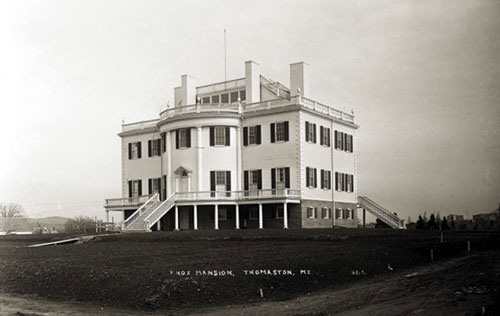
These European place names often replaced the Native American designations, though in Maine many of these tribal designations have proudly remained. All of Maine’s native peoples stemmed from the Algonquin tribe: the Abenaki, whose name means “people of the dawn,” the Micmac, Penobscot, and Passmaquoddy tribes continue to this day. Their heritage is preserved in many poetic names. Some honor actual tribal leaders, such as Orono (the home of University of Maine’s flagship school) named for Chief Joseph Orono, the son of a Frenchman and mother of partial Indian blood who helped the Americans during the Revolution.
Other Native American names translate to descriptive monikers for their places. The Allagash (River) refers to “bark place” for its location as the chief artery through Maine’s North Woods.The town of Aroostook takes its name from the Micmac word for “shallow river.” Carrabassett is Abenaki for “small moose place;” an appropriate designation for this western mountain valley inhabited by these quintessential Maine creatures, Carrabassett is also famed for its coffee roasting. Kenduskeag is Abenaki for “eel place,” named by Samuel de Champlain who saw Native Americans trapping eels on the Penobscot River around Bangor in 1604. Monhegan Island takes its name from the Micmac word for “out at sea.” The majestic island ten miles out boasts rugged cliffs and dazzling land and seascapes and has been home to many artists, among them Jamie Wyeth.
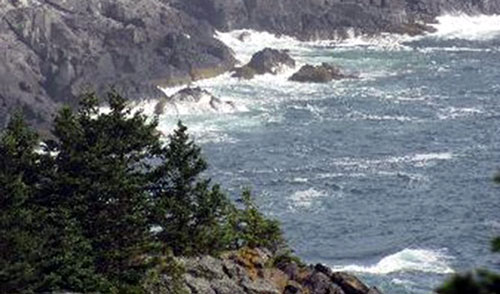
Still other tribal names are composites created from the colorful native languages, among them Mooselookmeguntic (Abenaki for “portage to the moose feeding place”), Chesuncook (Abenaki for “at the place of principal outlet”) Lake, which is a reservoir in western Maine, Schoodic (Abenaki for “trout place”) Penninsula which forms the dramatic norther portion of Acadia National Park, Sheepscot (Abenaki for “place of many channels”) for the deep river in Midcoast Maine which flows out to the sea, or Umbagog (Abenaki for “clear lake”) Lake in the western mountains.
Perhaps taking the cue from the tribal custom of using words which contain descriptions to name locations, the European settlers often followed similar patterns in English. Alligator Lake refers to the shape of the body of water in central Hancock County; Friendship replaced the Indian name of Medumcook in 1807 for this coastal village as a way to pay tribute to the friendliness of the people; Liberty which was chosen to show the townsfolk’s love of freedom when they separated in 1827 from the larger town of Montville; Hot Brook Lake near Danforth in Washington County is so named because it never freezes, while Ram Island off Harpswell is so called for the sheep which graze there. Bar Harbor, the famed resort near Acadia National Park is descriptive of the sand bars in the harbor. Cruise ships can only pull into port to discharge passengers at high tide and then must
wait in the deep channel to return to collect them. Or there is Blue Hill which Parson Jonathan Fisher named after he climbed the hill and saw all the surrounding hills cover with pine and spruce that gave them a dark blue color. Finally, there is Katahdin meaning “great mountain” which designates the highest peak in Maine at 5,268 feet that marks the northern end of the Appalachian Trail.
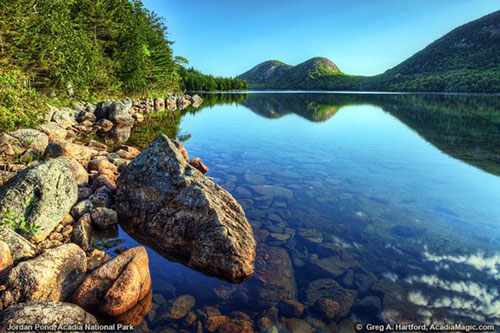
From descriptives to metaphoric and poetic appellations, Maine’s names reflect the education, cultural backgrounds, and aspirations of the settlers. Some make literary reference such as Addison, founded in 1797 and named after the popular 18th century English playwright Joseph Addison, the author of The Drummer and Cato. The flamboyant Romantic poet George Gordon Lord Byron has a town on the western border of the state named for him in 1833.Others make classical and mythic references. There is a Solon, Maine, named for the Greek statesman of Antiquity who was known as a wise lawgiver; the Waldo County Maine town of Troy, replaced previous names in 1826 when classical names were in vogue, or Aurora, honored the Greek goddess of dawn. The Kennebec County town of Albion is a nod to the ancient name for England used often by the poet William Blake.
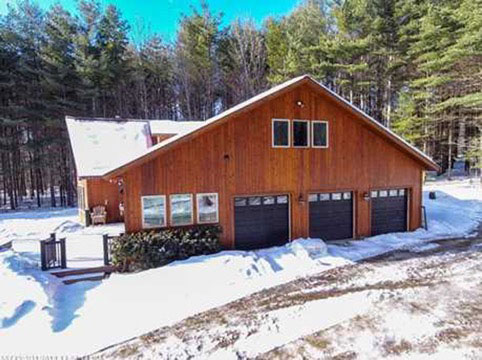
In a region where steepled churches dot the New England landscape, it is no wonder that Biblical names hold a special place in Maine. Lebanon, incorporated in 1767, was the first Maine town to be given a Biblical name. Others followed. There is Zion Hill near the western lake town of Bridgton; Hiram, named for the Biblical King of Tyre, Gilead, on the western border named for the Balm of Gilead trees which grow near the town center. New Sharon references the Biblical Plains of Sharon; Hebron was the name granted at the town’s incorporation in 1792 and now home to a pretisgious boarding prep school. Liturgical references proliferate as well, especially those deriving from the French Acadian roots. There is Notre Dame, St. Agatha, St. Albans, St. Croix and St.John (so named by Samuel de Champlain), St. George. St Helena, an island which held a quarry worked by prisoners, was named for Napoleon’s
place of exile.
But perhaps the most interesting of all are the names which catch visitors off guard and make them wonder what connection there is between this remote and rural state on the Atlantic coast that forms one of the United States’ northernmost points and exotic namesake places in Europe, Asia, and South America. In some cases the names reflect the settlers’ foreign origins. Cornish in southernmost York County takes its name from Cornwall, England from which its founder Francis Small had come. Norway honors its early settlers who came from Scandinavia in 1786. Exeter honors its early settlers from Exeter, New Hampshire, as does Harpswell in Midcoast named for the English village in Lincolnshire. Lubec on the upper Atlantic coast opposite New Brunswick may have ben named for its French Canadian settlers from Nova Scotia or from their German immigrants’ hometown of Lubec.
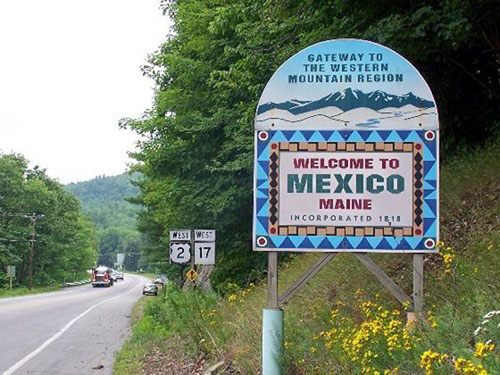
In other cases, they were inspired by a contemporary event. Popular legend has it that Denmark, Maine, in the western lake region was named after Danish seamen who fought the English warships during the Revolution. Moscow was chosen in 1812 when Russia was much in the news with Napoleon and the War of 1812. Trenton in Hancock County was so named in 1789 to commemorate the Battle of Trenton, New Jersey in 1776 which gave the American army under General Washington an important victory over the British. Similarly, Mexico, Maine, incorporated in 1818, pays tribute to our southern neighbor which gained its independence from Spain in the early 1800s.
And in still others, they speak to similarities in geography and climate. Bristol, named for its counterpart on the English Channel, is a town on the rugged Pemaquid Penninsula - one of the earliest settled areas in the state with residents as far back as 1625. Mount Desert Island, on which Acadia National Park sits, was so named by Samuel Champlain in 1604. Pronounced by Mainers as Mount “Dessert,” like a confection, the name an Anglicization of Champlain’s original Isle des Mont Deserts (Island of bare mountains, because its rocky peaks were destitute of trees. Still other places appended to their names to signify it was a New World location. There is New Sweden or Lucerne in Maine, which was the appellation given by the area’s developer, Harold Saddlemire to promote land sales by referencing the resemblance to the lakes and mountains of
Switzerland’s Alpine city. Similar monikers were chosen for Naples in Maine’slake region or Sorrento with its beautiful views on Frenchman’s Bay that remind of the picturesque Italian town on the Amalfi Coast.
And some remain a mystery. Why would the tiny hamlet of Corea on the Schoodic Penninsula – a scenic fishing village and quiet neighbor to Acadia National Park- be named for Korea? Lisbon in Midcoast was originally called Thompsonburg after large landowners, but changed its nameby citizens’ petition because they disapproved of General Samuel Thompson’s political views. But exactly why they chose the capital of Portugal is another story?
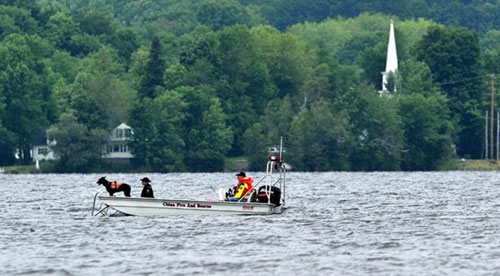
While it is generally accepted that the Maine town of China is named for the popular hymn of the same title, it is unclear if Poland, the home of the famous Poland Springs water bottling and hot springs resort, is named for the Native American chief Poland or for founder Moses Emery’s favorite hymn, “Poland.” Just as townsfolk disagree as to whether Paris, Maine, is named for Alfon Paris, who led Maine to separate from Massachusetts or for the capital of France. And if the latter, why so?
Naming is a very personal pursuit, deeply rooted in our heritage, our history, our ancestry, and our subliminal sense of identity. Names can be evocative, aspirational, defining, descriptive, sentimental, whimsical. They are the spoken identity markers people and places carry with them throughout their existences.
Perhaps poet T.S. Elliot said it best in his Old Possum’s Book of Practical Cats when he talked of every cat needing three names: a sensible everyday name, a more dignified, “peculiar” name that helps distinguish him and imparts a sense of self-esteem, and finally:
the name that you never will guess;
The name that no human research can discover -
But THE CAT HIMSELF KNOWS, and will never confess... .
His ineffable effable
Effanineffable
Deep and inscrutable singular Name.
If this wisdom applies to felines – and to human beings too – surely it can also be said of places – places in Maine whose intriguing names contain volumes of history and chronicle multitudinous journeys.
|